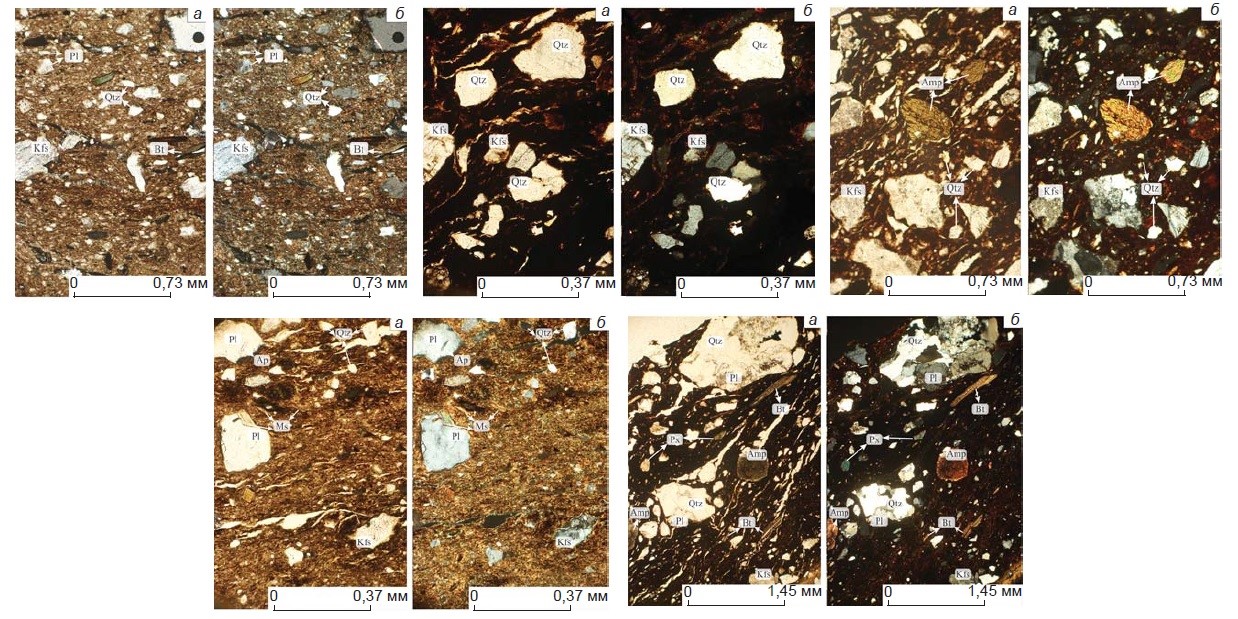Researchers reconstructed and compared pottery traditions from different Kulaika culture sites which existed in the area of Western Siberia during the Early Iron Age. The Novosibirsk variant of the Kulaika culture was identified by Professor Tatyana Troitskaya (Dr Sci) back in 1979, and the current research has provided evidence supporting some of her hypotheses.
The study involved researchers from the Institute of Archaeology and Ethnography SB RAS, the Trofimuk Institute of Petroleum Geology and Geophysics SB RAS and the Boreskov Institute of Catalysis SB RAS.
What activities did the research process include?
The archaeological finds were investigated by various up-to-date research methods and analyses, such as technical and technological (experimental-tracological), petrographic, X-ray phase and thermal analyses. This allowed the researchers to acquire sufficient data to reconstruct the technological methods used for the manufacture of ancient ceramics.
– My role in this work consisted in conducting the petrographic analysis of ancient pottery shards (which enables one to determine the mineralogical composition of ceramic matrix and features of their technology and to identify sources of raw mineral), - said Anastasia Maksimova, junior researcher at the Laboratory of Hydrogeology of Sedimentary Basins of Siberia (IPGG SB RAS). – I also participated in the interpretation of the results of X-ray phase analysis.

The upper row contains ceramic slabs from the Kamenny Mys burial site; the lower row shows ceramic slabs from the Dubrovinsky Borok–3 site. Designations: Qtz – quartz; Pl – plagioclase; Kfs – potassium feldspar; Ms – muscovite; Ap – apatite; Bt – biotite; Px – pyroxene; Amp –amphibole.
To determine the ceramics manufacture technology, vessels from the Kamenny Mys burial site, Dubrovinsky Borok-3 and Dubrovinsky Borok-4, as well as Ordynskoye-9 sites were examined. Of particular interest to scientists were the finds from the Kamenny Mys burial site and Dubrovinsky Borok-3 settlement located 1 km to the south-east. Researchers point to similarities in the ornamentation and shape of vessels from these cultural monuments which date back to different times: end of 3rd century BC (burial site), and 1st century BC (settlement).
What conclusions did the researchers arrive at?
The research results revealed specific features of the pottery technology and enabled reconstruction of some historical and cultural processes providing a glimpse of the distant past.
Thus, a comprehensive MDA analysis of ceramics showed that raw material used at two sites, Kamenny Mys and Dubrovinsky Borok-3, originated from a single region, but from different mines. Three types of clay were used at the former site, and two at the latter, bearing evidence of several groups of potters using various types of clay. Correlation between the types of clay and composition of the paste supports this idea.
The difference is also evidenced in the practices (and/or recipes) of preparing clay mass to be shaped into molds. The MDA-based comparison of the paste materials in ceramics from the Kamenny Mys and Dubrovinsky Borok-3 sites has revealed significant differences in their mineral composition. This may indicate either that the Dubrovinsky Borok-3 population did not build the Kamenny Mys necropolis, thus regarding it as a burial site of another indigenous group, or that these monuments came into being at different times.
The latter assumption is consistent with the hypothesis by Professor T.N. Troitskaya, according to which these monuments belong to different times within the period of existence of the Novosibirsk variant of the Kulaika culture.
Also, results of the thermal analysis of ceramic samples from all the investigated sites showed that some of the vessels were subjected to a more intense firing compared to others. This may indicate distinctive traits of pottery technologies/practices which varied in different settlements.
In the future, scientists intend to continue comprehensive multidisciplinary studies of ceramics of the Kulaika culture with an aim to reconstruct ancient societies of the Early Iron Age of Western Siberia, and provide deeper insights into their cross-cultural contacts and historical and socio-political interactions (by attributing clay pottery to its place of manufacture).
For reference
This research project (No. 21-78-00039) was funded by the Russian Science Foundation grant.
For full account of its results and findings please see the article by
D.V.Selin, A.A. Maksimova, Z.A.Fedorova, 2024. Pottery traditions among the carriers of the novosibirsk variant of the kulaika culture: a multidiscuplinary study. Archaeology, Ethnology and Anthropology of Eurasia – Vol. 52 (1), p. 75-85
Published by IPGG Press Service
Illustration courtesy of the researchers